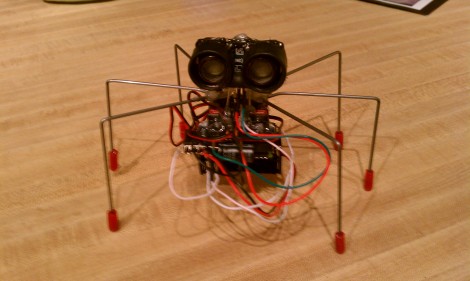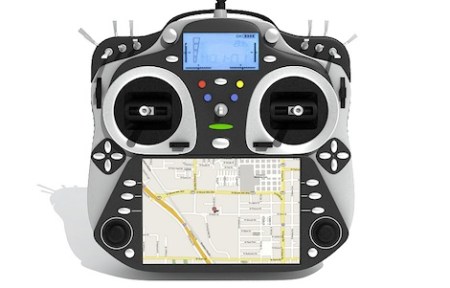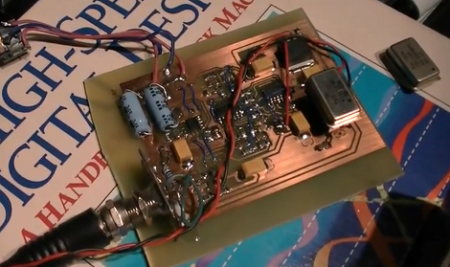[Demetris] sent in a tip about a project he’s working on: an Open Source Remote Control transmitter. This is one of the most impressive looking RC transmitters we’ve ever seen. The OSRC could be great for a small UAV – just get the GPS position from the aircraft and map it with the transmitter’s screen. There’s also support for a video downlink so flying around New York City is possible with a single device.
Day: July 19, 2011
Chilean Teen Builds Automatic Earthquake Alarm

When an earthquake is about to strike in Chile, who do you think is first to sound the alarm? You might be surprised that it’s not the government, but rather a 14 year old boy.
After living through an earthquake in 2010 and seeing the devastation this spring in Japan, Chilean teenager [Sebastian Alegria] decided that he wanted to construct something similar to Japan’s earthquake warning system. He purchased an off the shelf earthquake detector for less than $100, and connected it to his computer via an Arduino.
Now, whenever seismic activity is detected, his sensor tweets an alert letting his 29,000+ followers know that a perceptible earthquake is 5 to 30 seconds away. Apparently the Chilean government is working on a similar system that is still at least a year away, so in the meantime his fellow citizens rely on [Sebastian] instead.
While it might seem like a relatively easy hack to pull off compared to other earthquake detectors, we’re impressed by [Sebastian’s] creativity, and his will to help others. He’s been pounding away at computers since he was about 4 years old and has several other popular Twitter-based projects under his belt already, so we won’t be surprised if we hear from him again in the future.
Obstacle Avoiding Hexapod From Reused Parts

[Rob] built this hexapod one day when he had some free time after work. Just like the last hexapod we saw, he based the build on the Pololu design which uses three servo motors for surprisingly reliable movement.
The hardware is very straight forward. A Dorkboard serves as the brain. It’s a PCB that is wider on each side by the width of one female pin-header than a standard AVR 28-pin microcontroller. This gives easy access to all of the pins on the Arduino chip while making it small and light. You can see that a four-pack of batteries hangs below the servo motors to provide power.
Protruding above the 6-legger is a PING ultrasonic rangefinder. This adds autonomy to the little robot, which you can see running some obstacle avoidance routines in the video after the break. We’ve asked [Rob] if is able to share his code and will update this post if we hear back from him.
Update: Here’s a link to the sketch, and we’ve updated the picture with one that [Rob] sent to us.
Continue reading “Obstacle Avoiding Hexapod From Reused Parts”
One Really Big Quadcopter That Is Following In The Steps Of The Spruce Goose

Behold the Land-Bear-Shark, a quadcopter on a rather grand scale. At a full eight kilograms it’s an easy target to compare the [Howard Hughes] behemoth, but in addition to the weight, this still has yet to make its first flight.
To give you some scale to the image above, the board at the center is an Arduino. It controls the beast, along with the help of a SparkFun IMU board which rides atop. Really, if any quadcopter of this size has a chance of working, this should be the one. The construction is beautiful, making use of carbon fiber rod along with 3D-printed connectors to assemble the frame. A lot of thought has gone into small things like conserving weight used on the landing gear, which are incorporated into the bottom corner brackets. The batteries are connected in a manner that makes them easy to adjust, acting as ballast for balancing the craft.
We’re keeping our fingers crossed that this will be more than the tongue-in-cheek title of the post which calls it a Quadrotor-shaped sculpture.
[via Adafruit]
Gambiologia – Brazilian Physical Item Hacking
Gambiologia, according to the source article, is the “science of Gambiarra.” For those not from Brazil, Gambiarra is “a Brazilian cultural practice of solving problems creatively in alternative ways with low cost and lots of spontaneity.” In other words, the hacking of real-world items. Gambiarra also has a connection to recycling, as instead of throwing something used out, it becomes something else new.
Although hacking may not be thought of as art in the traditional sense, [Fred Paulino] aims to change this with his exhibition of 20 Brazilian and international artists. A “Gambiologist” himself, he’s put together quite a collection of hacks and mods for the world to see. From computer monitors with eyes displayed on them, to a toilet held open with a two-by-four, his exhibit seems to cover a wide range of physical hacks, or Gambiarra.
Be sure to check out the article, as many of the hacks are quite clever or unusual (even if some may seem a bit unsafe). For more examples of hacking items into something new, check out this drill made out of a pencil sharpener or this remote control camera trigger using air freshener parts.
[Jeri Ellsworth] Builds A Software Radio
[Jeri Ellsworth] has been working on a direct conversion receiver using an FPGA as an oscillator and a PC sound card DSP. Being the excellent presenter she is, she first goes through the history and theory of radio reception (fast forward to 1:30), before digging into the meat of the build (parts 2 and 3 are also available).
2011 CCC R0ket Badge

[Geekabit] wrote in asking if we’d seen the 2011 CCC badges yet. The answer is NO, we haven’t seen them because the image above is the only sneek peek we can find on their broken-certificate website. But we are glad that he shared the link with us, because it does tell the tale of what hardware and firmware features will be on this year’s badge.
Right off the bat we need to applaud them for several things. Most notably, the 3.7 volt 600 mAh LiPo battery which can be recharged via the USB port. It boasts an ARM Cortex M3 processor which is running what they call and ‘unbrickable’ bootloader that is programmed via the USB port. You can see there is an LCD screen which we’d guess is about 128×128 pixels (correct us if you know otherwise). You’ll be able to interact using a 5-way button, via the RF transceiver, and possibly using an optical interface but we’re not sure that feature made it into the final design. They’ve also rolled in a shield system for extra harware so that you can design your own add-ons before you get there.
As always, if you get your hands on one of these, we want to hear all about your project as well as get an overview of the stock badge and its features so don’t forget to drop us a line.
Update: [Never_gonna] left a comment with a link to a series of posts about r0cket development including a video which we’ve embedded after the break. Thanks!














